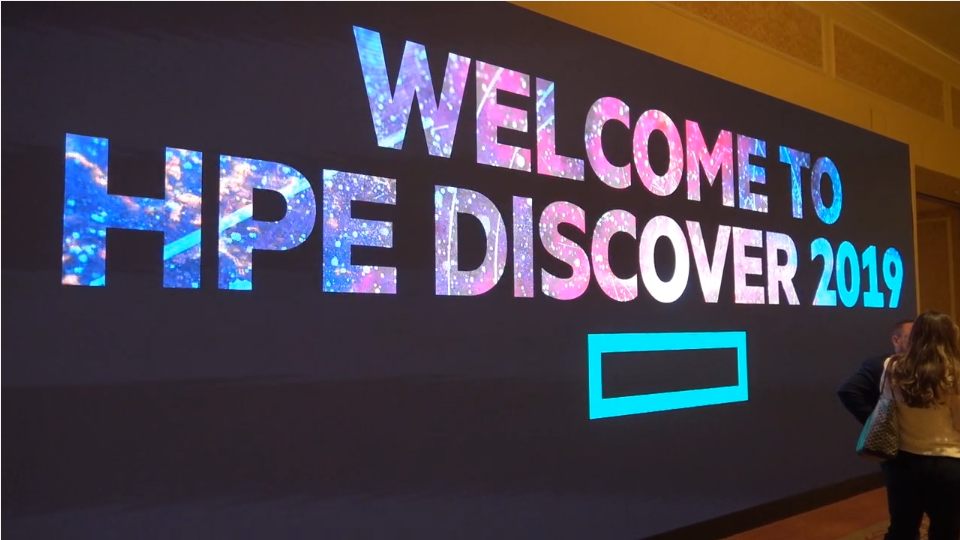 The big news in Las Vegas this week was HPE’s decision to go all in on “as a service.” Emboldened by its success with GreenLake, Antonio Neri announced the entire HPE portfolio would be available “as a service” by 2022. To be clear, HPE will continue to sell products via traditional CapEx methods, as well, offering its customers choice. Its premise is that it believes that cloud is not a destination, but rather it is an experience and so this announcement challenges the notion that cloud first equals public cloud only, and deliver the same cloud experience with Greenlake. The new “as a service” option will include subscription, pay-per-use and consumption models and fall under the GreenLake brand.
The big news in Las Vegas this week was HPE’s decision to go all in on “as a service.” Emboldened by its success with GreenLake, Antonio Neri announced the entire HPE portfolio would be available “as a service” by 2022. To be clear, HPE will continue to sell products via traditional CapEx methods, as well, offering its customers choice. Its premise is that it believes that cloud is not a destination, but rather it is an experience and so this announcement challenges the notion that cloud first equals public cloud only, and deliver the same cloud experience with Greenlake. The new “as a service” option will include subscription, pay-per-use and consumption models and fall under the GreenLake brand.
If you attended last year’s event, you may remember that HPE announced it would be investing $4B in the intelligent edge. It was clear that this investment is starting to pay off for customers based on the new or enhanced solutions announced this week.
Innovations to HPE’s Intelligent Edge included:
- Enhancements to Aruba Central including:
- SaaS Prioritization: With 67% of respondents to ESG’s annual Technology Spending survey reporting that they consume 1 in 5 applications via a SaaS model, delivering functionality to enhance SaaS performance and provide visibility into user experience for O365 and Salesforce should be welcomed.
- SD-WAN orchestrator: Enables organizations to quickly and securely deploy WAN connections from company locations to the cloud, integrates with Aruba Virtual Gateways for AWS and Azure.
- New network management workflows: Leverage a mobile app utilizing automation to accelerate provisioning and troubleshooting across all sites.
- ClearPass Device Insights: This is now integrated with Aruba Central and delivers IoT security and visibility. Given the expected growth in IoT devices, it will be important for organizations to deploy solutions able to automatically discover and properly identify these proliferating devices. By tying into Policy Manager and segmentation capabilities, organizations can drive policy enforcement to each device or user.
- NetInsight and User Experience Insight: By integrating these capabilities into Aruba Central to deliver analytics and assurance, organizations can be more proactive in identifying potential issues. This should also enable organizations to improve customer experiences and optimize network infrastructure.
- The ability to deliver solutions for the industrial edge that included:
- HPE Edgeline IoT Quick Connect: This offering enables organizations to simplify the convergence of OT and IT and includes Edgeline OT Link Platform, the EL300 Converged edge system and Azure IoT. ESG research highlights the need for organizations to drive tighter alignment between OT and IT to enable future IoT initiatives so delivering turnkey solutions will be important.
- Closely coupling sensor technology with APs. Integrating ABB smart sensors with Aruba access points enables wireless OT connectivity to better instrument the infrastructure to optimize performance and availability. In addition to ABB, HPE is also working with Microsoft, PTC and Siemens.
- Intelligent Edge IoT Center of Excellence and Lab: HPE is building out new facilities focused on driving new technologies and capabilities to accelerate IoT adoption
The innovation did not stop at the Edge, however. There were a slew of announcements on the cloud, storage, and data management side as well, including a brand-new Intelligent data platform, hybrid and composable cloud capabilities, enhancements to HCI and deeper integration with Infosight across the storage portfolio. For more information on this please see ESG storage guru Scott Sinclair’s blog on the subject.
Antonio repeatedly stated that much of the transformation organizations are undergoing requires technology, people and economics. HPE has a full portfolio of technology, and Pointnext can help with training and accelerating new technology deployments. As mentioned above in the “as a service” section, HPE is driving new ways to fund this transformation. In addition to GreenLake consumption models, HPE is getting creative in helping organizations not only drive additional budget for innovation but create sustainable IT upcycling programs. HPE refers to this as the Circular Economy. To find out more about this program, check out my previous blog on the subject. HPE believes its efforts in this space are a competitive differentiator in helping organizations accelerate their digital transformation efforts.
Overall, it was encouraging to see the difference a year can make, considering it has only been 3 years since HP split into two companies, and a few years since a number of its major acquisitions and 7 quarters since an engineer took the helm. HPE appears to have turned the corner and is now driving new, innovative solutions to the market. In fact, a number of people I spoke to said there is a lot more yet to come. I am looking forward to seeing what comes next for HPE and how these new innovations will help enable organizations transform and leverage IoT effectively.







